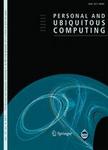版权所有:内蒙古大学图书馆 技术提供:维普资讯• 智图
内蒙古自治区呼和浩特市赛罕区大学西街235号 邮编: 010021

作者机构:Institute of Cybersecurity and Cryptology School of Computing and Information Technology University of Wollongong WollongongNSW2522 Australia School of Mathematics and Computer Science Fujian Normal University Fuzhou China
出 版 物:《Personal and Ubiquitous Computing》 (Pers. Ubiquitous Comp.)
年 卷 期:2022年第26卷第3期
页 面:863-879页
核心收录:
学科分类:08[工学] 0837[工学-安全科学与工程] 0812[工学-计算机科学与技术(可授工学、理学学位)]
基 金:National Natural Science Foundation of China, NNSFC, NNSF, NSF, NSFC, (61822202, 61872087, 61872089) National Natural Science Foundation of China, NNSFC, NNSF, NSF, NSFC
摘 要:Security surveillance system plays an important role in the society. However, how to securely send the sensitive information from the surveillance node to the server is a critical issue which should be well addressed. In this paper, to develop a secure communication scheme applied between the surveillance camera and the server, we propose the important and desirable security and privacy features that should be achieved by such systems, and present a secure scheme that can achieve the security goals. Our scheme ensures that encrypted datagrams not sent from the surveillance cameras can be filtrated by a public message filter while data and sender privacy is still well preserved for encrypted data sent from legitimated cameras. Furthermore, the server in our scheme is the only entity which can reveal the real sender given a ciphertext produced by it and give a proof to convince others the origination of that ciphertext without leaking its content. Such property enables the server to build a searchable database using the camera’s identifier as index and also the message auditor to check the ciphertext and its origination stored in the database without any dispute. We provide the formal security models to define these security requirements and give formal security proofs in the random oracle model. © 2019, Springer-Verlag London Ltd., part of Springer Nature.